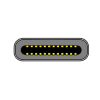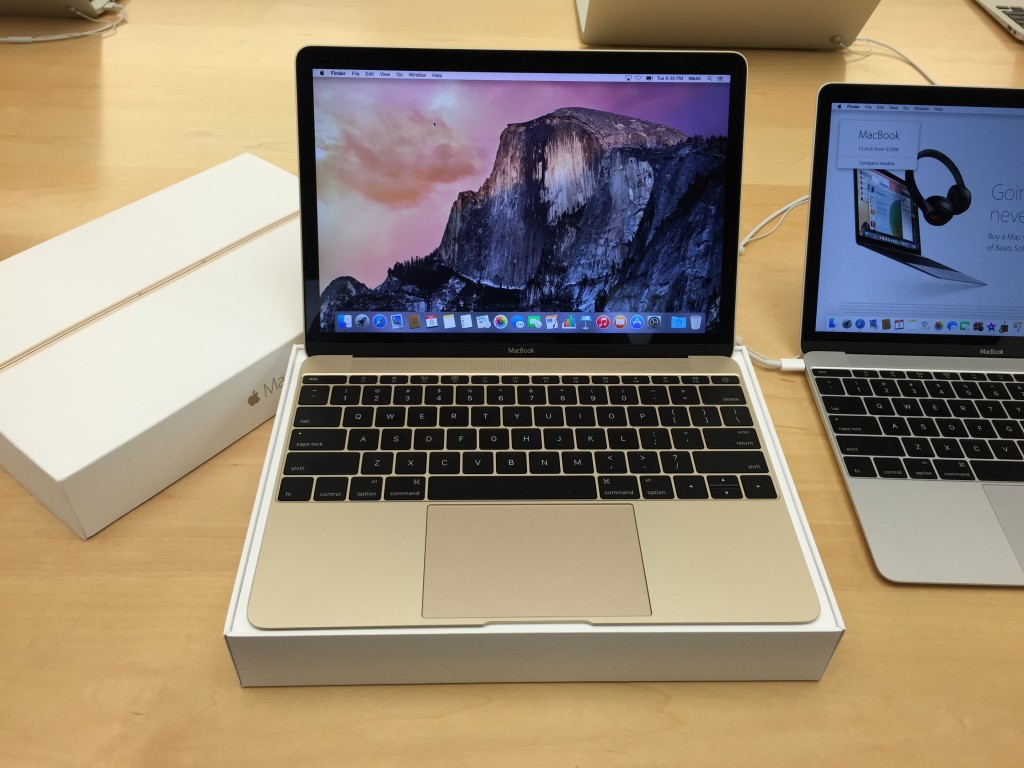58
High Trust Products4
Compatible Products4
Not Working ProductsChargers and Power Banks
Headphone & Speakers
Cases & Covers
Virtual Reality
Cables & Adapters
Media Player
Laptop
Tablet
Desktop
Cell Phone
Printers & Copiers
Memory Cards
TV
Computer Display
Game Console
Smart Home
Wearable Technology
Photo & Video Camera
Car Electronics
Car
Networking Equipment
Smart Toys
Home Audio & Video
Professional & Industrial
Storage Drive
Docking Station
Game Console Controllers
Set-top box
Keyboard, Mice, & Stylus
Portable Music Player
Computer Parts & Components
Cordless & Speakerphones
Projector
Software
Reporting
MacBook (Early 2015)
by Apple









Interested in this product?

Select a product category to see which devices type we recommend to use with the MacBook (Early 2015):
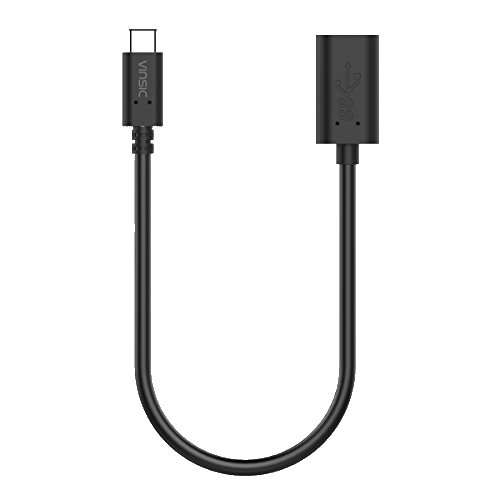
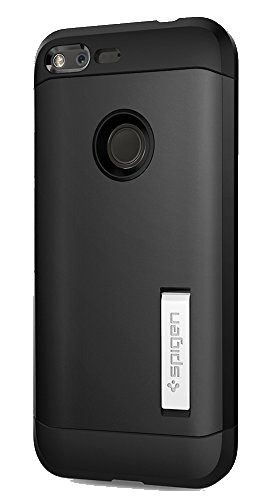

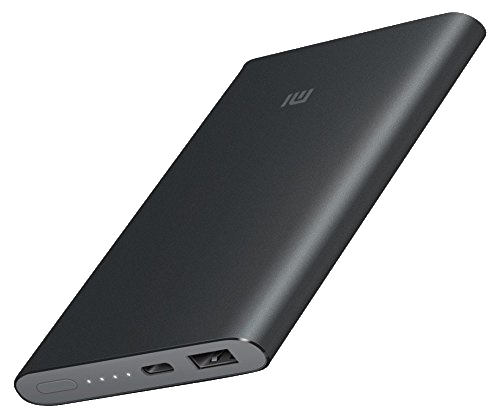
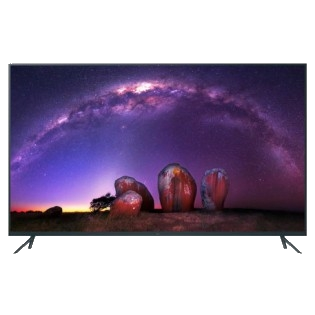

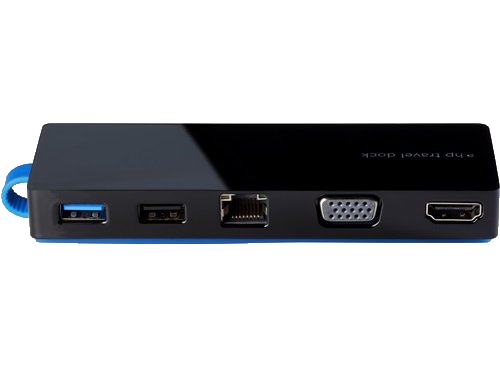

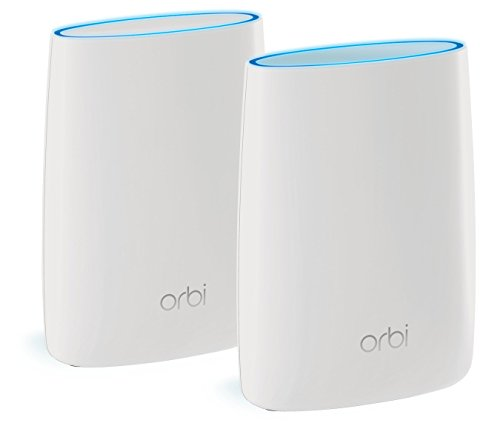


Apple MacBook Going the Distance with USB Type-C
As smartphones become thinner and more fashion forward, there became less and less space for smartphone designers to stick holes that you could plug into. Soon, the only hole that became available on all non-Apple phones was a USB port that you could use for charging and data transfer. Now notebooks are following the same trend and not look too out of placed compared to their trendier cousins, the tablet. As Apple overhauled their eponymous MacBook in early 2015, they saw a chance to come up with a super sleek notebook, the first of its kind that similar to smart phones, only has one interface, a USB port. Only, this is no ordinary USB port. Forged by giants like Intel, Apple, and Google, the USB Type-C port enables insanely fast file transfer speeds, multi interface technology support, and enough juice to power or charge mobile class devices up to 100 Watts. That means with just a single USB Type-C port, you can power your MacBook, use your MacBook to charge your iPhone, add a USB drive, or attach your monitor.
I purchased the MacBook at the Apple Store in Westfield Valley Fair Mall in Santa Clara, California.


Inside the MacBook box, the main accessory is a USB Type-C Power Charger and Type-C cable. Gone are the thick and heavy power adapters and power cords lightening your load even more.
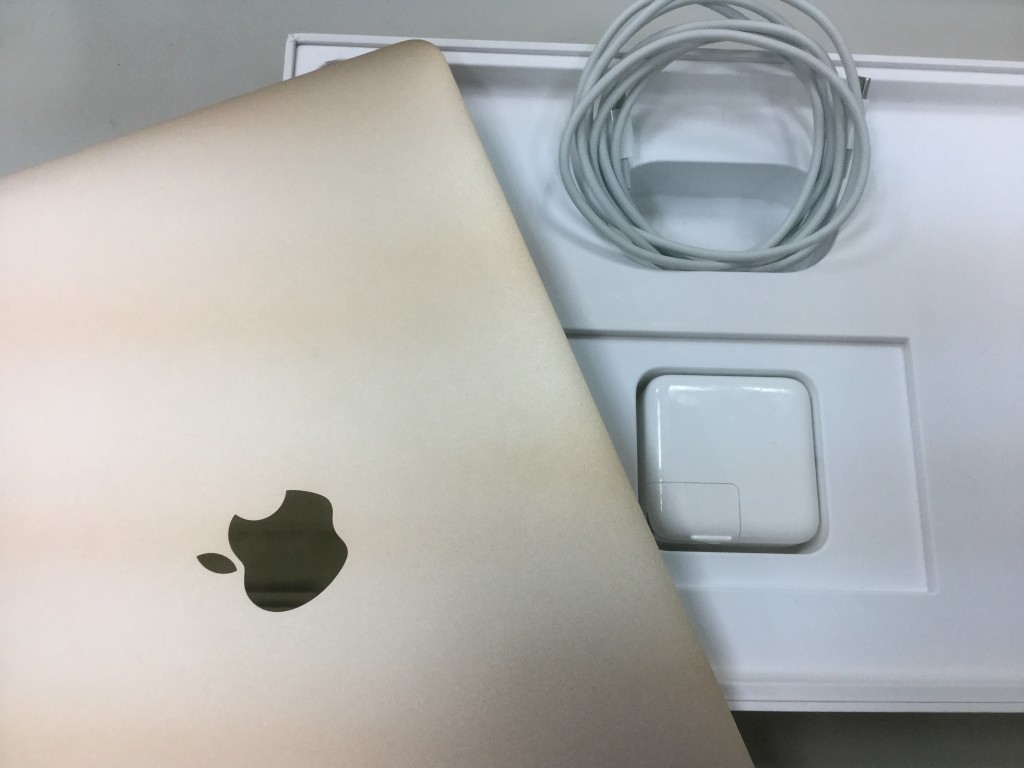
The new MacBook doesn't have the rainbow of colors like in the past but the "beyond silver" options looks stylish and great.
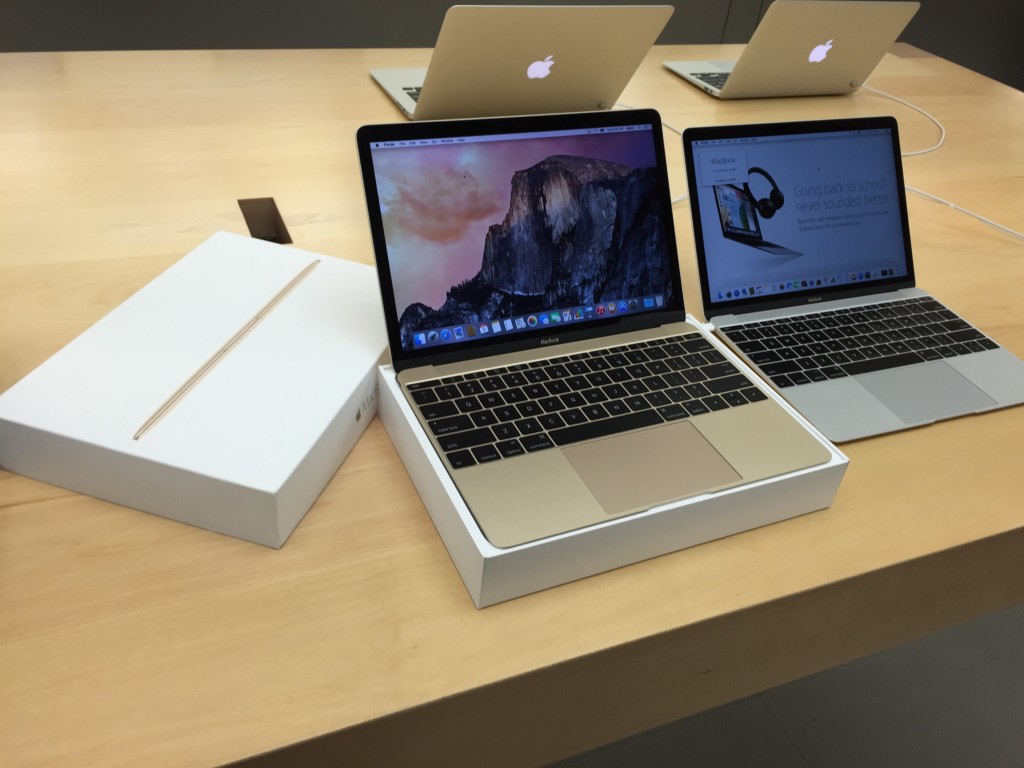
One of the things that sets Apple product apart from others are the wide range of accessories available.
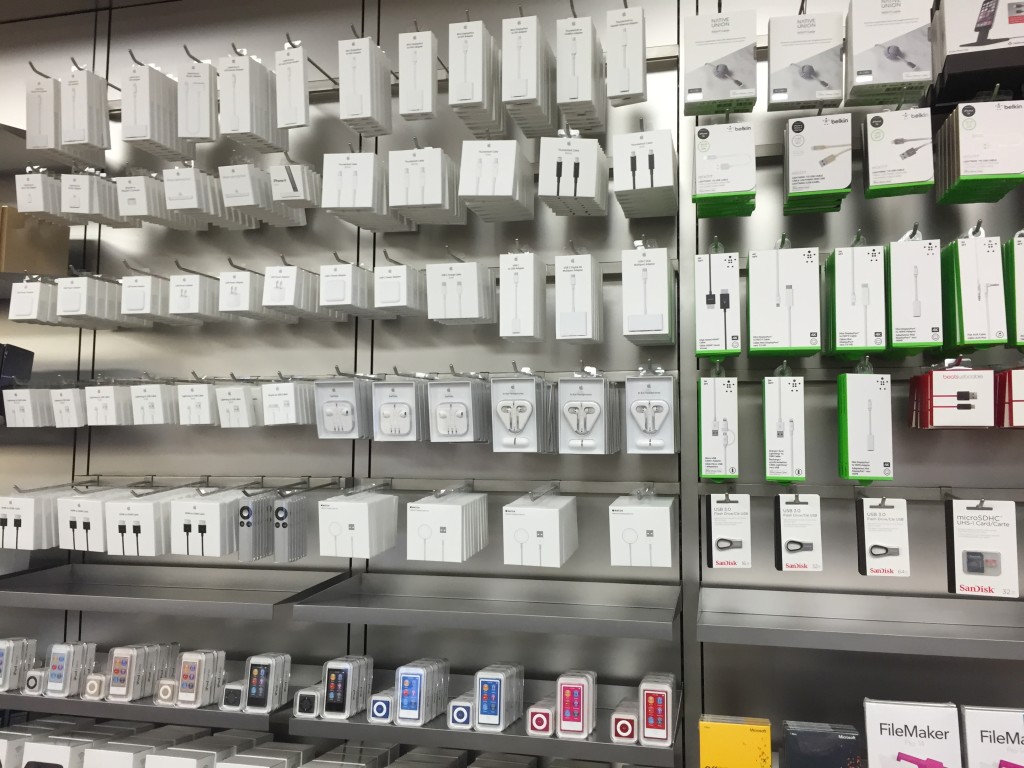
For USB Type-C, Apple initially released 3 products. The USB-C to USB Adapter allows you to connect any USB device like USB flash Drive or attach a USB cable to do an emergency charge of your iPhone. The USB-C Digital AV Multiport Adapter lets you connect to any HDMI TV or display. The USB-C VGA Multiport Adapter acts like a mini docking station, where you can connect to legacy VGA displays and projectors, USB drives, and other USB Type-C devices.
With USB Type-C, the MacBook (Early 2015) has been able to push the edge of thinness and cool, creating an elegant design suitable perhaps not for the corporate power user that needs many ports (buy the MacBook Pro for that) but perfect for those looking for an extremely portable, looks great in your Coach handbag type of notebook.
For a closer look on the Mac's power profile, we ran the following tests for the MacBook (Early 2015) using the USB Power Test App from Granite River Labs with the Granite River Labs USB Power Delivery Compliance C2 Tester.
The USB Power Test App first negotiates a power contract emulating the Source to determine the Power Delivery Sink capabilities of the MacBook (Early 2015). The USB Power Test App then reports out the voltage and current supported by the Mac for each of the Source PDO's advertised to the Mac.
| Sink Cap. | Voltage (V) | Current (A) |
|---|---|---|
| 5V | 5.09 | 2.02 |
| 6V | 5.07 | 0.02 |
| 7V | 5.06 | 0.02 |
| 8V | 5.09 | 1.53 |
| 9V | 5.07 | 1.31 |
| 10V | 5.08 | 0.02 |
| 11V | 5.07 | 1.08 |
| 12V | 12.08 | 0.94 |
| 13V | 13.05 | 0.95 |
| 14V | 14.07 | 0.82 |
| 15V | 15.09 | 1.18 |
| 16V | 16.11 | 1.01 |
| 17V | 17.07 | 0.83 |
| 18V | 18.07 | 1.13 |
| 19V | 19.08 | 0.8 |
| 20V | 20.08 | 0.89 |
The USB Power Test App from Granite River Labs also produces a voltage, current trace plot which graphically shows the voltage and current requested by the MacBook (Early 2015) for each advertised Source PDO throughout the power negotiation.
Using the USB Power Delivery Compliance C2 Tester from Granite River Labs to run just a subset of the full USB Power Delivery compliance test suite, compliance failures were observed entirely for all tests performed for the MacBook (Early 2015).
USB-IF High Level Mapping Summary
Sl No
|
Test Category
|
Test Group Description
|
Test Result
|
|---|---|---|---|
2
|
PHY_PRIMARY_RX
|
BMC Physical Layer Receiver
|
FAIL
|
3
|
PHY_PRIMARY_MISC
|
BMC Physical Layer Miscellaneous
|
FAIL
|
4
|
PROT_PRIMARY
|
Protocol Specific Primary
|
FAIL
|
5
|
POWER_PRIMARY
|
Power Source/Sink Primary
|
FAIL
|
Result Summary
Sl No
|
Test ID
|
Test Name
|
Test Result
|
|---|---|---|---|
3
|
TDA.2.1.2.2
|
TDA.2.1.2.2 BMC PHY RX INT REJ
|
FAIL
|
4
|
TDA.2.1.2.1
|
TDA.2.1.2.1 BMC PHY RX BUSIDL
|
FAIL
|
5
|
TDA.2.1.3.1
|
TDA.2.1.3.1 BMC PHY TERM
|
FAIL
|
6
|
TDA.2.1.3.2
|
TDA.2.1.3.2 BMC PHY MSG
|
FAIL
|
7
|
TDA.2.2.1
|
TDA.2.2.1 BMC PROT SEQ GETCAPS
|
FAIL
|
12
|
TDA.2.2.7
|
TDA.2.2.7 BMC PROT BIST NOT 5V SRC
|
FAIL
|
14
|
TDA.2.2.9
|
TDA.2.2.9 BMC PROT GSC REC
|
FAIL
|
15
|
TDA.2.2.10
|
TDA.2.2.10 BMC PROT IGN PPS
|
FAIL
|
17
|
TDA.2.3.1.2
|
TDA.2.3.1.2 POW SRC LOAD CP ACC
|
FAIL
|
18
|
TDA.2.3.2.1
|
TDA.2.3.2.1 POW SRC TRANS P PC
|
FAIL
|
19
|
TDA.2.3.2.2
|
TDA.2.3.2.2 POW SRC TRANS CP ACC
|
FAIL
|
20
|
TDA.2.3.3.1
|
TDA.2.3.3.1 POW SNK TRANS C CP
|
FAIL
|
21
|
TDA.2.3.3.2
|
TDA.2.3.3.2 POW SNK TRANS PC
|
FAIL
|
View Full Article
Featured Products
 GTrusted
GTrusted




